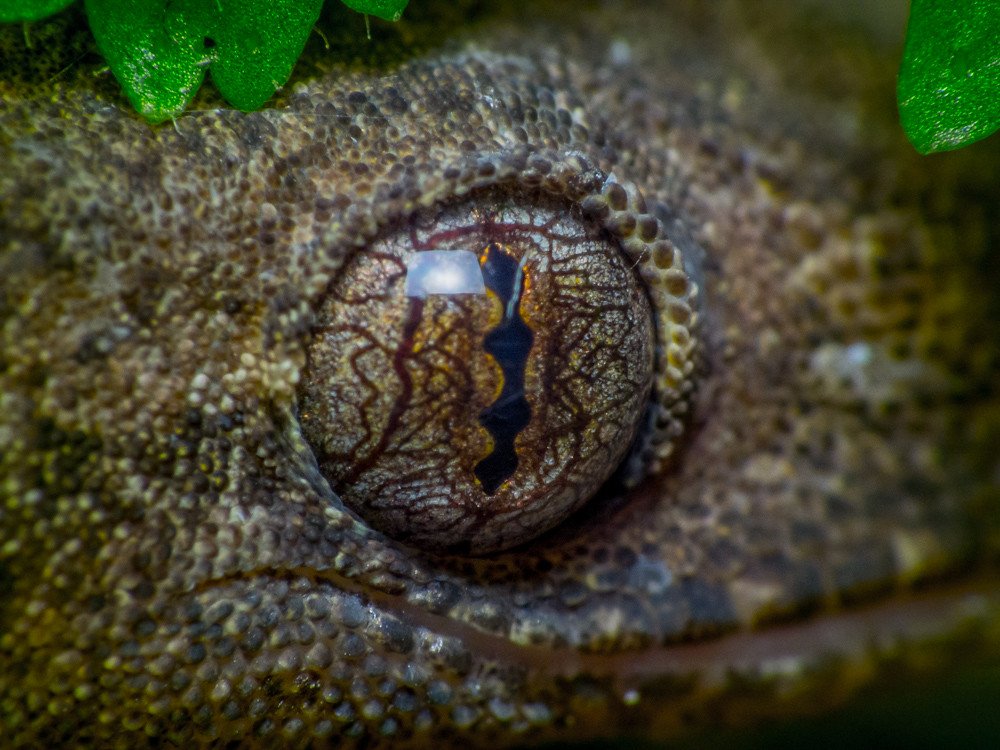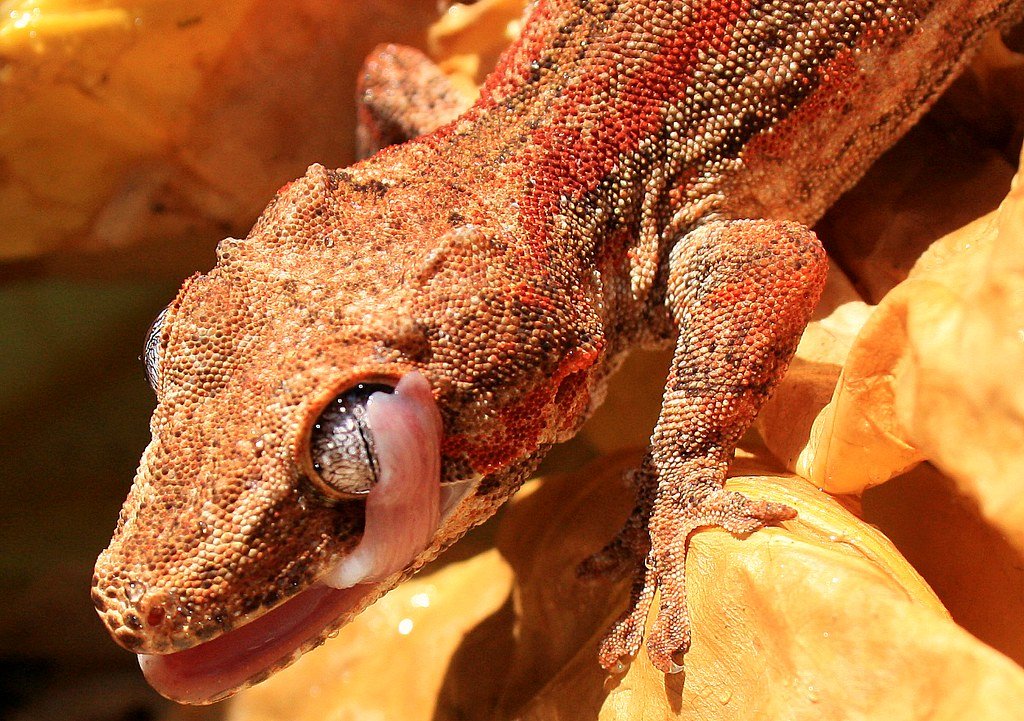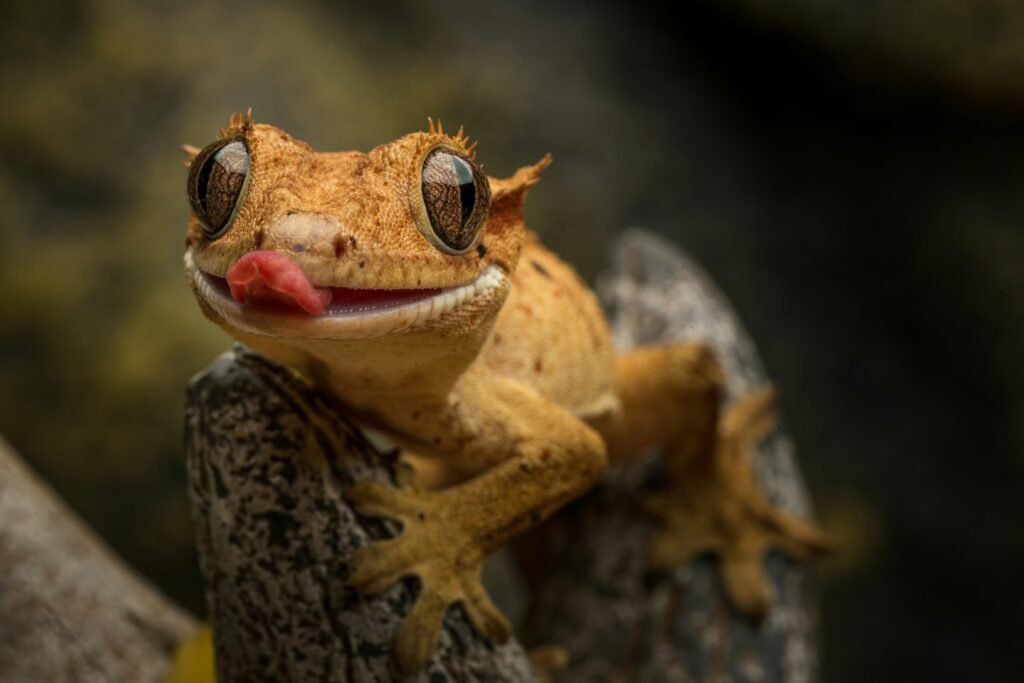Picture this: you’re watching a documentary about desert life when suddenly, a small lizard appears on screen and does something absolutely bizarre. It extends its tongue and carefully licks its own eyeball. Your first thought might be “that’s gross,” but what you’re witnessing is actually one of nature’s most ingenious solutions to survival in harsh environments. This isn’t some random quirky behavior – it’s a sophisticated biological adaptation that has helped geckos thrive in some of the world’s most challenging habitats for millions of years.
The Science Behind the Eye-Licking Phenomenon

The gecko’s eye-licking behavior serves a crucial biological function that goes far beyond simple grooming. Unlike humans and many other animals, geckos lack moveable eyelids, which means they cannot blink to keep their eyes clean and moist. Instead, they’ve developed a remarkable adaptation where their tongue becomes a sophisticated cleaning tool.
This behavior is most commonly observed in species like the leopard gecko and tokay gecko. Their tongues are perfectly designed for this task – long enough to reach every corner of their eye surface and equipped with specialized papillae that act like tiny brushes. The saliva contains enzymes that help break down debris and harmful microorganisms.
Why Geckos Don’t Have Traditional Eyelids

The absence of moveable eyelids in geckos isn’t an evolutionary oversight – it’s actually a brilliant design feature. Traditional eyelids would interfere with their incredible night vision capabilities, which are essential for their primarily nocturnal lifestyle. Their eyes are covered instead by a transparent, protective membrane called a spectacle or brille.
This spectacle is similar to what snakes have, but geckos face a unique challenge that snakes don’t. While snakes shed their entire skin, including the eye covering, geckos retain their spectacle throughout their lives. This means they need a different cleaning strategy to maintain optimal vision.
The spectacle can accumulate dust, dead skin cells, and other debris that would seriously impair their vision if left uncleaned. This is where their remarkable tongue-cleaning behavior becomes absolutely essential for survival.
The Anatomy of a Gecko’s Cleaning Tongue

A gecko’s tongue is an engineering marvel that would make any designer jealous. The surface is covered with hundreds of tiny, backward-facing hooks called papillae, which are perfect for scraping away even the most stubborn particles. These papillae are arranged in specific patterns that maximize cleaning efficiency while minimizing the risk of eye damage.
The tongue’s flexibility allows geckos to reach every angle of their eye surface, ensuring thorough cleaning. The tip is particularly sensitive and can detect even microscopic debris that needs removal. The saliva itself contains antimicrobial properties that help prevent eye infections.
What’s truly fascinating is that different gecko species have evolved slightly different tongue structures based on their specific environmental challenges. Desert-dwelling geckos, for instance, have more robust cleaning mechanisms to deal with sand and dust particles.
How This Behavior Impacts Their Survival

In the wild, clear vision can literally mean the difference between life and death for a gecko. These creatures rely heavily on their eyesight to spot predators, locate prey, and navigate their environment. Even a small amount of debris on their eye surface could blur their vision enough to make them vulnerable to attack.
The eye-licking behavior also helps geckos maintain their incredible ability to see in low-light conditions. Their pupils can dilate to enormous sizes – up to 300 times larger than human pupils – but this amazing adaptation only works if their eye surface remains perfectly clean. Any obstruction would dramatically reduce their night vision capabilities.
This cleaning behavior becomes even more critical during molting periods when geckos shed their skin. Dead skin particles can easily get into their eyes, and without proper cleaning, these could cause serious vision problems or infections.
The Frequency and Timing of Eye Cleaning

Geckos don’t randomly lick their eyes whenever they feel like it. This behavior follows specific patterns that have been fine-tuned by millions of years of evolution. Most geckos clean their eyes several times per day, with increased frequency during dusty conditions or after feeding.
The timing is often synchronized with their activity cycles. Many species perform thorough eye cleaning sessions right before their peak hunting hours, ensuring optimal vision when they need it most. This behavior is also commonly observed after geckos wake up from their daytime rest.
Environmental factors play a huge role in determining cleaning frequency. Geckos living in sandy or dusty environments may clean their eyes up to 20 times per day, while those in cleaner habitats might only need to do it a few times daily.
Different Gecko Species and Their Cleaning Techniques

Not all geckos approach eye cleaning in exactly the same way. Leopard geckos, for example, have developed a particularly methodical approach, systematically cleaning one eye at a time with precise, deliberate movements. Their technique involves multiple passes across the eye surface, ensuring complete coverage.
Tokay geckos, on the other hand, tend to be more aggressive cleaners, using rapid, vigorous licking motions. This might be related to their more active lifestyle and the environments they typically inhabit. Crested geckos have developed a gentler approach, using their tongues more like a soft cloth than a scrubbing brush.
Some species have even developed specialized cleaning rituals that involve specific head movements and tongue positions. These behaviors are often passed down through generations and can vary slightly between different populations of the same species.
The Role of Saliva in Eye Maintenance

Gecko saliva is far more sophisticated than most people realize. It contains a complex mixture of enzymes, proteins, and antimicrobial compounds that make it the perfect cleaning solution for their eyes. The consistency is specifically adapted to be neither too thick nor too thin for optimal cleaning effectiveness.
The antimicrobial properties of gecko saliva help prevent bacterial and fungal infections that could otherwise develop on the moist eye surface. Some compounds in their saliva can even break down certain types of environmental toxins that might accumulate on their eyes.
Research has shown that gecko saliva has a pH level that’s perfectly balanced for eye cleaning, neither too acidic nor too basic. This careful balance ensures that the cleaning process doesn’t damage the delicate eye tissues while still being effective against debris and microorganisms.
Environmental Adaptations and Eye Cleaning

Geckos living in different environments have developed specific adaptations to their eye-cleaning behavior. Desert species face the constant challenge of sand and dust particles, leading to more frequent and thorough cleaning sessions. Their saliva often contains additional compounds that help neutralize the abrasive effects of sand.
Rainforest geckos deal with different challenges, including high humidity and various organic debris like pollen and fungal spores. Their cleaning behavior is adapted to handle these specific environmental hazards, with particular attention to removing sticky substances that might adhere to their eye surface.
Urban geckos have had to adapt their cleaning behavior to deal with human-made pollutants and debris. Some populations have shown increased cleaning frequency in response to air pollution, demonstrating the remarkable adaptability of this behavior.
The Evolution of This Remarkable Behavior

The eye-licking behavior in geckos represents millions of years of evolutionary refinement. Fossil evidence suggests that early gecko ancestors may have had rudimentary forms of this behavior, but the sophisticated techniques we see today have been perfected over countless generations.
Natural selection has favored geckos with more effective cleaning behaviors, as those with cleaner eyes had better survival rates. This selective pressure has led to the development of increasingly specialized tongue structures and cleaning techniques. The behavior has become so refined that it’s now considered one of the most efficient biological cleaning systems in nature.
Genetic studies have revealed that the neural pathways controlling this behavior are hardwired into gecko DNA, meaning young geckos instinctively know how to clean their eyes without being taught. This genetic programming ensures that this crucial survival skill is never lost.
Impact on Gecko Vision and Hunting Success

The relationship between eye cleaning and hunting success in geckos is absolutely crucial. Studies have shown that geckos with compromised eye cleaning abilities have significantly reduced hunting success rates. Clear vision allows them to accurately judge distances when striking at prey, which is essential for their survival.
The cleaning behavior also helps maintain their ability to detect subtle movements in their peripheral vision. This is particularly important for spotting predators or prey animals that might be trying to remain hidden. Even slight visual impairment can dramatically reduce their chances of survival in the wild.
Geckos that neglect their eye cleaning often develop what researchers call “visual degradation syndrome,” where accumulated debris gradually reduces their vision quality. This condition can lead to malnutrition, increased predation risk, and ultimately death.
The Mechanics of Tongue Movement

The actual mechanics of how geckos move their tongues to clean their eyes is a masterpiece of biological engineering. The tongue movement involves a complex coordination of multiple muscle groups, allowing for precise control over pressure and direction. The cleaning motion typically follows a specific pattern that ensures complete coverage of the eye surface.
Geckos can adjust the stiffness of their tongue depending on the type of debris they’re trying to remove. For light dust, they use gentle, sweeping motions, while stubborn particles require more aggressive scraping actions. This adaptability ensures effective cleaning without causing eye damage.
The speed of tongue movement is also carefully controlled. Too fast, and they might miss spots or cause injury; too slow, and they become vulnerable to predators during the cleaning process. Evolution has fine-tuned these movements to be both effective and efficient.
Comparison with Other Reptile Cleaning Methods

While geckos have perfected the art of eye-licking, other reptiles have developed different solutions to similar problems. Snakes, for example, rely on their regular skin-shedding process to clean their eye coverings. This works well for them but wouldn’t be practical for geckos due to their different lifestyle and physiology.
Iguanas and other lizards with moveable eyelids can blink to keep their eyes clean, but they lack the nocturnal vision capabilities that geckos possess. This trade-off demonstrates how evolution has led different species down different paths to solve similar challenges.
Some reptiles use external objects like rough surfaces to clean their eyes, but this method is less precise and potentially more dangerous than the gecko’s tongue-based approach. The gecko’s method represents perhaps the most sophisticated and efficient eye-cleaning system in the reptile world.
Research and Scientific Studies

Scientific research into gecko eye-cleaning behavior has revealed fascinating insights into both the mechanics and importance of this behavior. High-speed photography has allowed researchers to analyze the exact movements involved in eye cleaning, revealing previously unknown details about tongue positioning and pressure application.
Studies using specialized equipment have measured the cleaning effectiveness of different gecko species, showing that some techniques are significantly more efficient than others. This research has implications not just for understanding gecko biology, but potentially for developing new cleaning technologies for human applications.
Recent genetic research has identified specific genes responsible for controlling eye-cleaning behavior, opening up new possibilities for understanding how this remarkable adaptation evolved. These findings are contributing to our broader understanding of animal behavior and evolution.
Implications for Gecko Care in Captivity

Understanding the importance of eye-cleaning behavior has significant implications for people who keep geckos as pets. Captive geckos may face different challenges than their wild counterparts, including different types of debris and varying humidity levels that can affect their cleaning needs.
Pet owners need to ensure that their geckos have the opportunity to perform natural eye-cleaning behaviors without interference. This means providing appropriate environmental conditions and avoiding substrate or decorations that might interfere with the cleaning process.
Sometimes captive geckos may need assistance with eye cleaning, particularly if they’re dealing with health issues or environmental problems. However, this should always be done carefully and preferably under veterinary guidance, as improper cleaning can cause serious eye damage.
The Future of Gecko Eye-Cleaning Research

Current research into gecko eye-cleaning behavior is opening up exciting new avenues for both biological understanding and practical applications. Scientists are studying the biomechanics of gecko tongues to potentially develop new cleaning technologies for various industries.
The antimicrobial properties of gecko saliva are being investigated for potential medical applications. Understanding how these compounds work could lead to new treatments for eye infections or other medical conditions. The research is still in early stages, but the potential applications are promising.
Advanced imaging techniques are revealing new details about how geckos coordinate their cleaning behavior with other activities. This research is contributing to our broader understanding of animal cognition and behavior, with implications far beyond just gecko biology.
Conservation Implications

Understanding gecko eye-cleaning behavior has important implications for conservation efforts. As human activities continue to alter natural environments, geckos may face new challenges that affect their ability to maintain clean eyes. Increased air pollution, for example, could make eye cleaning more difficult and less effective.
Conservation biologists are now considering the impact of environmental changes on gecko vision and cleaning behavior when developing protection strategies. This includes ensuring that protected habitats maintain the environmental conditions necessary for effective eye cleaning.
Climate change may also affect gecko eye-cleaning behavior, as changing temperature and humidity patterns could alter the types of debris geckos encounter. Understanding these relationships is crucial for predicting how gecko populations might respond to environmental changes.
Conclusion

The gecko’s eye-licking behavior represents one of nature’s most elegant solutions to a complex survival challenge. This remarkable adaptation showcases the incredible ingenuity of evolution, turning what might seem like a simple grooming behavior into a sophisticated biological system that’s essential for survival.
From the specialized anatomy of their tongues to the complex chemistry of their saliva, every aspect of this behavior has been fine-tuned over millions of years. The precision, frequency, and effectiveness of gecko eye cleaning rival any human-engineered cleaning system.
As we continue to study and understand this fascinating behavior, we’re not just learning about geckos – we’re gaining insights into the fundamental principles of biological adaptation and survival. The next time you see a gecko licking its eyeball, remember that you’re witnessing millions of years of evolutionary perfection in action. What other seemingly simple animal behaviors might actually be hiding such remarkable complexity?


